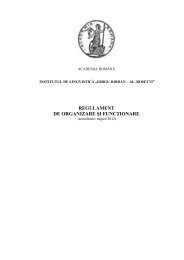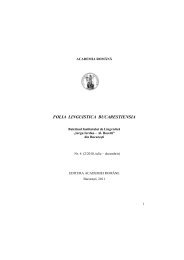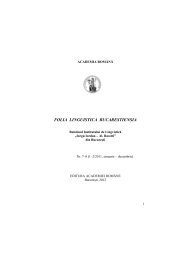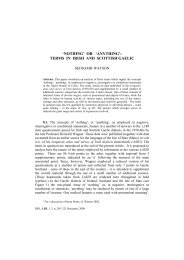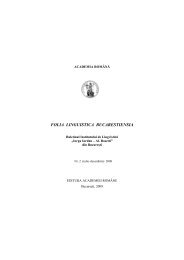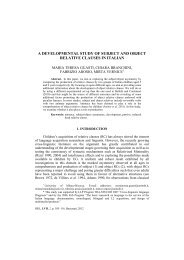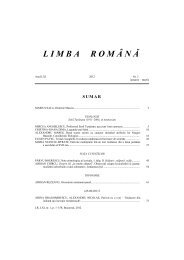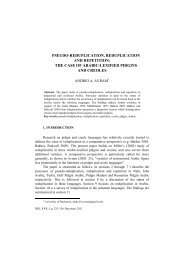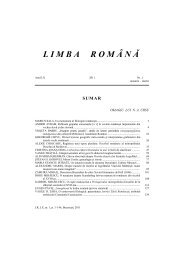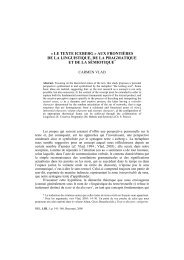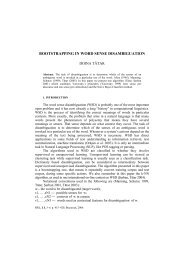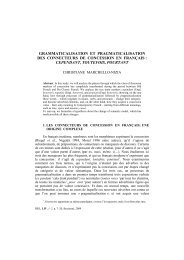You also want an ePaper? Increase the reach of your titles
YUMPU automatically turns print PDFs into web optimized ePapers that Google loves.
298<br />
Ian Hancock<br />
for over three and a half centuries. Despite this, the non-Portuguese derived lexical<br />
content of Papia Kristang is comparatively small.<br />
Other dialects belonging to the Malayo-Portuguese group include those of<br />
Singapore 9 , Korlai 10 , Macao 11 and Hong Kong 12 . In earlier years similar varieties<br />
were spoken in Djakarta, Tugu, Flores, Ceram and other East Indian communities,<br />
but today these have given way to Malay or other Indonesian languages. The socalled<br />
Malayo-Spanish languages of the Philippines have been shown to be a<br />
development from an earlier Malayo-Portuguese contact vernacular 13 .<br />
Less closely related to Papia Kristang are the Creole Portuguese dialects<br />
belonging to the Indo-Portuguese group, which were spoken in many towns along<br />
both coasts of India, and in Sri Lanka 14 . Indo-Portuguese once supported a<br />
flourishing literature − mostly of a religious nature − but today its speakers are few.<br />
It has nevertheless had considerable influence upon Malacca Creole since not only<br />
did it probably contribute to the formation of the Malayo-Portuguese dialects,<br />
which were established at a later period, but it has continued to exert a marginal<br />
influence upon it up to the present day due to limited social traffic between the two<br />
areas.<br />
The orthography employed here is based upon that currently used for Malay,<br />
with the exception that Malay e-breve (ĕ) for [ə] 15 is written /ă/. This has the<br />
advantage of being a spelling system with which most Papia Kristang speakers are<br />
already familiar, and may easily be used since the phonological systems of the two<br />
languages are broadly speaking identical.<br />
Papia Kristang has eight vowels, only six of which are contrastive 16 . These<br />
are /i/, /e/-/e/, /a/, /]/-/o/, /u/ and /ə/. For some speakers there is a certain amount of<br />
free variation between /i/ and /e/, and /o/ and /u/. Phonetically, /ə/ is articulated as a<br />
9 For specimens of Singapore Creole Portuguese, see Adolfo Coelho, “Os Dialectos<br />
Românicos ou Neolatinos na Africa, Asia e América’, Boletim da Soc. de Geografia de Lisboa, 2,<br />
129−196 (1880−1), 3, 451−478 (1882) and 6, 705−755 (1886). As in Malacca, this dialect is<br />
called Kristang.<br />
10 See J. C. Clements, The Genesis of a Language: The Formation and Development of Korlai<br />
Portuguese. Amsterdam: Benjamins, 1996.<br />
11 For an outline of Macao Creole Portuguese, see Graciete Batalha, “Estado Actual do<br />
Dialecto Macaense”, Revista Portuguesa da Filologia, 9, 177−213, 1959.<br />
12 See R. W., “O Dialecto Português de Hong Kong”, Boletim de Filologia, XIX,<br />
289−293 (1960).<br />
13 See Keith Whinnom, Spanish Contact Vernaculars in the Philippine Islands (Hong Kong<br />
University Press, 1956).<br />
14 See Dalgado, S.R., O Dialecto Indo-Português de Ceylão (Lisbon, 1900) and for<br />
Changes since then, Ian Russell Smith, Sri Lanka Creole Portuguese Phonology. Unpublished<br />
doctoral dissertation, Cornell University, 1977.<br />
15 In recent years the official Bahasa Melayu orthography has done away with the e-<br />
breve /ĕ/ symbol, employing only /e/.<br />
16 There are two words where (e) and (e) are contrastive, viz. pétu ([petu]), ‘chest,<br />
breast’, and pétu (['petu]), ‘near’ (Ptg. peito and perto).



